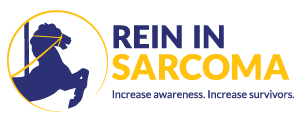
What is sarcoma?
Sarcoma is a type of cancer found in connective tissues. It usually is found as a tumor, that is, a lump, bump, or mass. Sarcoma cancers are found in fat, blood vessels, nerves, bones, muscles, deep skin tissues, tendons, and cartilage. They are divided into two main groups—bone tumors and soft tissue tumors. These two main groups can be broken down into more specific sub-types based on the type of cells found in the tumor. There are over 100 different types of sarcoma tumors, most of which are very rare.
Types of sarcoma cancers
Soft Tissue Sarcomas
Soft tissue sarcoma tumors can occur in muscles, fat, nerves, blood vessels, tendons, and other soft tissues that support, surround, or protect body organs and joints. Soft tissue sarcomas can be found anywhere in the body, from head to toe, but they are more often found in the extremities, such as in the arms or legs.
- Approximately three-quarters of people diagnosed with sarcoma will be diagnosed with a type of soft tissue sarcoma. There are many types of soft tissue sarcoma. Some of those types are so rare that only a few cases will be diagnosed in the United States each year.
- In their early stages, soft tissue sarcoma rarely show any symptoms. Because soft tissue is very elastic, tumors can grow quite large before they are felt as a lump or bump.
- Pain may occur when a sarcoma starts to press on nearby muscles and nerves.
- Imaging such as MRI scans, can help determine if a lump or mass has features consistent with a sarcoma.
- The only way to make a definitive diagnosis of soft tissue sarcoma is through a biopsy, which is when either the entire tumor or a small piece of it is surgically removed for testing. This is best performed by a skilled surgeon who is very familiar with sarcoma, and who will take great care in not allowing the spread of cancer cells during initial biopsies.
The most common types of soft tissue sarcoma cancers are described below. This is not intended to be a complete list and may not contain the specific sarcoma cancer type that you (or your loved one) have been diagnosed with. It is always best to work closely with your own oncologist and sarcoma cancer team who will help get you all the additional information that you will want to know.
Bone sarcomas
Bone Sarcoma tumors develop in the bone tissue itself or in the cartilage that provides cushion between bones in the joints.
- Approximately 3,600 new cases of bone sarcoma cancers are diagnosed in the United States each year, accounting for less than 0.2% of all cancers.
- Unexplained pain that does not go away, and/or a lump that may appear under the skin, are the most common symptoms of this type of cancer.
- As a tumor gets bigger, it can cause a joint, such as the knee or elbow, to swell, often being mistaken for an injury instead of a bone tumor. These tumors can also weaken the bones, causing easy fractures.
- A variety of imaging, such as X-Rays, CT scan or an MRI scan, can decide if a lump or mass is a bone tumor.
- An orthopedic bone surgeon, who is very familiar with sarcoma cancers, should be consulted for a diagnosis and surgical and treatment plans.
- Bone sarcomas are diagnosed by either removing the entire tumor or a small piece of it through a surgical biopsy.
The most common types of bone sarcomas are described below. Working closely with your oncologist and cancer team will help get you all the information you need. This is not intended to be a complete list.
